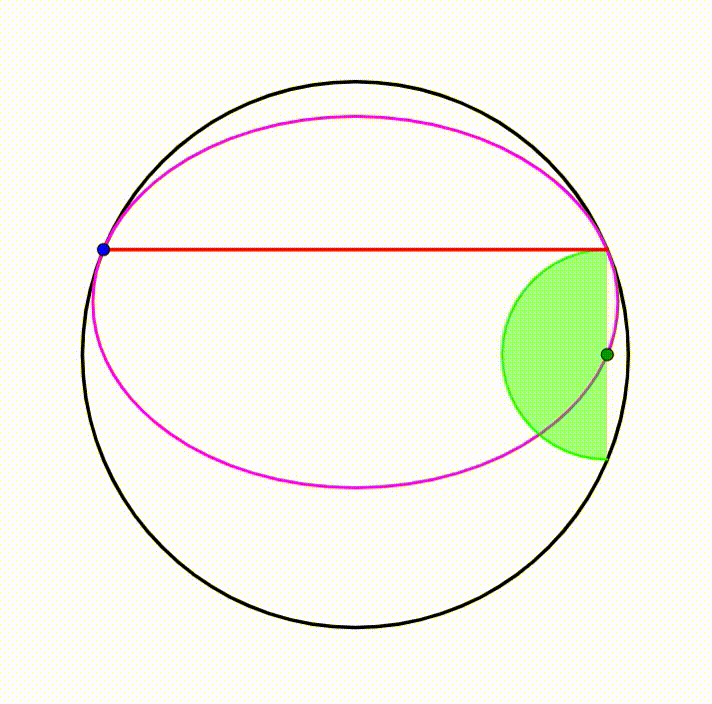Dynamic Geometry: P120
 The diagram shows a black circle. A horizontal red chord is drawn creating two circular segments, their respective heights are
and
. In each circular segment, we inscribe a semicircle. The center of each semicircle traces a
locus
(purple curves). The area bounded by the purple curves can be rounded to the nearest integer. What is this integer?
The diagram shows a black circle. A horizontal red chord is drawn creating two circular segments, their respective heights are
and
. In each circular segment, we inscribe a semicircle. The center of each semicircle traces a
locus
(purple curves). The area bounded by the purple curves can be rounded to the nearest integer. What is this integer?
The answer is 87.
This section requires Javascript.
You are seeing this because something didn't load right. We suggest you, (a) try
refreshing the page, (b) enabling javascript if it is disabled on your browser and,
finally, (c)
loading the
non-javascript version of this page
. We're sorry about the hassle.
From the compiled calculations in Dynamic Geometry: P96 Series , we know that the radius of the circle is 6 . 5 and the red dividing chord A B = 1 2 . If the center O of the circle is the origin ( 0 , 0 ) of the x y -plane, where A B is parallel to the x -axis, then A B is along y = 2 . 5 .
Let an arbitrary point on the locus or the center of the moving semicircle be P ( x , y ) . Note the upper and lower parts of the locus is continuous and it is traced by P . Note the O P is along the diameter C C ′ . Let M N be the diameter of the semicircle and C P = k . By intersecting chords theorem ,
M P ⋅ P N r 2 = C P ⋅ P C ′ = k ( 1 3 − k )
Let P Q be perpendicular to the x -axis. By Pythagorean theorem ,
O Q 2 + P O 2 x 2 + y 2 x 2 + y 2 x 2 + y 2 x 2 + y 2 x 2 + y 2 x 2 + 2 y 2 − 5 y x 2 + 2 ( y − 4 5 ) 2 8 3 1 3 x 2 + 1 6 3 1 3 ( y − 4 5 ) 2 = O P 2 = ( 6 . 5 − k ) 2 = 4 1 6 9 − 1 3 k + k 2 = 4 1 6 9 − r 2 = 4 1 6 9 − ( y − 2 5 ) 2 = 4 1 6 9 − y 2 + 5 y − 4 2 5 = 3 6 = 3 6 + 8 2 5 = 8 3 1 3 = 1 Note that r 2 = 1 3 k − k 2 and y = P Q = r + 2 . 5
Therefore the locus is an ellipse with center at ( 0 , 4 5 ) , a major semi-axis a = 8 3 1 3 , a minor semi-axis b = 4 3 1 3 , and area a b π = 8 2 3 1 3 π ≈ 8 7 .